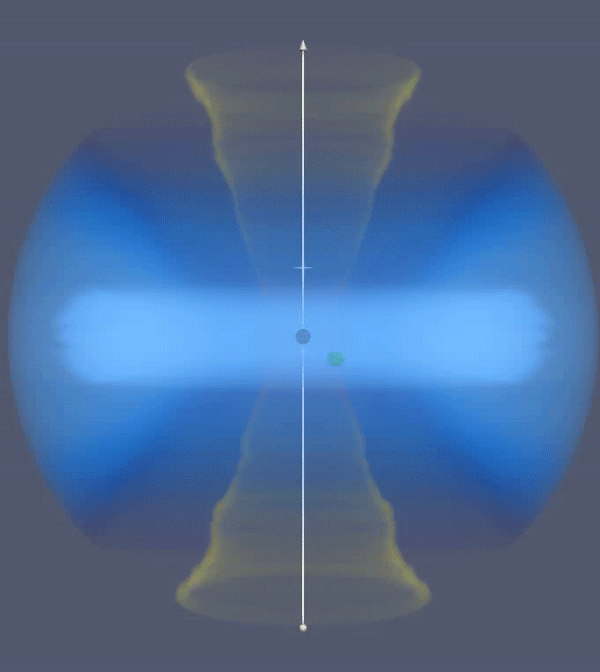In a distant galaxy, astronomers have detected unusual activity from a supermassive black hole, previously known for its silence. Researchers from MIT and several other countries observed the black hole erupting with gas plumes every 8.5 days—a phenomenon not seen before. This irregular behavior suggests that black holes may exhibit more varied actions than previously thought, hinting at the possibility that a smaller black hole in orbit around the supermassive one could be disrupting the larger black hole’s gas disk with regular slings of material.
The team’s work, presented in Science Advances, contradicts earlier understandings of black holes, which envisioned their accretion disks as relatively even layers of gas orbiting the black hole. The discovery proposes that these disks could be more complex, potentially housing other black holes or stars. “This is telling us there are a lot more things [black holes] can do,” says MIT’s Dheeraj “DJ” Pasham. The multinational study includes contributions from researchers across MIT departments and international institutions.
This revelation was made possible by the ASAS-SN network, which is tasked with daily surveys of the sky for extraordinary events. In December 2020, ASAS-SN captured a sudden brightening within a quiet part of the galaxy. Pasham capitalized on this discovery, directing NASA’s NICER to monitor the galaxy’s X-ray emissions. During the ensuing four months, the team observed recurring dips in energy every 8.5 days within the flare, resembling the effect of a planet transiting a star but on a galactic scale.
Pasham’s quest for an explanation led to a collaboration with Czech theorists who had speculated on the existence of black hole pairs with the smaller one slicing through the primary’s gas disk, periodically releasing plumes of gas. These plumes, when aligned with a telescope, could appear as periodic dips in energy. The observations from NICER, combined with simulations, supported this theory, suggesting the supermassive black hole was accompanied by a smaller companion.
 A computer simulation of an intermediate-mass black hole orbiting a supermassive black hole, and driving periodic gas plumes that can explain the observations.
A computer simulation of an intermediate-mass black hole orbiting a supermassive black hole, and driving periodic gas plumes that can explain the observations.
Before the flare, the galaxy’s central black hole—equivalent in mass to 50 million suns—was quiet, likely circled by a thin accretion disk and a smaller black hole. A tidal disruption event, caused by a star wandering too close, might have temporarily amplified the disk’s luminosity as the star’s remnants spiraled into the black hole. Over four months, this system produced larger plumes, one of which was detected by NICER.
The research indicates the potential for many such David-and-Goliath systems, with small black holes orbiting larger ones, challenging the traditional view of black hole accretion disks. This discovery not only provides insights into the dynamics within galactic nuclei but also holds exciting implications for future gravitational wave detectors, as noted by Richard Saxton, an X-ray astronomer not involved in the study. NASA partially supported this groundbreaking research.
Images are courtesy of Jose-Luis Olivares, MIT, and Petra Sukova, Astronomical Institute of the Czech Academy of Sciences.
The original story can be accessed here.
The original research article can be accessed here.













Responses (0 )